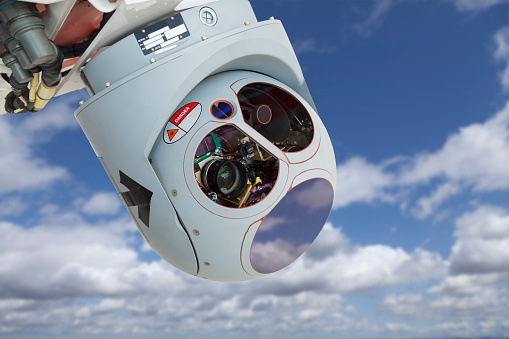The Plan includes the establishment of a European Defence Fund and other actions to support Member States' more efficient spending in joint Defence capabilities, strengthen European citizens' security and foster a competitive and innovative industrial base.
European Defence Action Plan. Presentation. Credits: EC
The importance of a strong Europe that can defend and protect its citizens at home and abroad led the Commission to adopt yesterday a European Defence Action Plan to innovate and pool resources in the European Defence industry in accordance with the political will expressed by its President, Jean-Claude Juncker, in his 2016 State of the Union speech.
'Europe can no longer afford to piggy-back on the military might of others or let France alone defend its honour in Mali. (...) For European Defence to be strong, the European Defence industry needs to innovate. That is why we will propose before the end of the year a European Defence Fund, to turbo boost research and innovation,' he stated then.
'To guarantee our collective security, we must invest in the common development of technologies and equipment of strategic importance – from land, air, sea and space capabilities to cyber security. It requires more cooperation between Member States and greater pooling of national resources. If Europe does not take care of its own security, nobody else will do it for us. A strong, competitive and innovative Defence industrial base is what will give us strategic autonomy," said yesterday.
This new instrument is closely linked with and complementary to the Global Strategy's Implementation Plan on Security and Defence, which sets out a new level of ambition for the Union and identifies actions to fulfil it, as well as with the implementation of the EU-NATO Joint Declaration signed by the President of the European Council, the President of the Commission and the Secretary-General of NATO.
However, its presentation takes place in times of speculation and uncertainty generated by the remarks of the US President-elect, Donald Trump, describing NATO as obsolete and expressing his view about the Alliance becoming into an organization to fight against terrorism, the possibility of a new position of the United States in NATO's structure and a reduction of the US contribution to its budget in conjunction with a possible new scenario in the chapter of the US Russia relations and Brexit. The withdrawal of the United Kingdom, the largest Western European military power, from the EU, also means an opportunity and a need to take the Union from the soft, hard based, power level to the smart one.
Under the European Defence Action Plan, the Commission proposes to:
1 - Set up a European Defence Fund to support investment in joint research and the joint development of Defence equipment and technologies: the proposed Fund would include two 'windows' which are complementary but different in their legal structure and budget sourcing.
A 'research window' to fund collaborative research in innovative Defence technologies such as electronics, metamaterials, encrypted software or robotics. The Commission has already proposed EUR 25 million for Defence research as part of the 2017 EU budget, and expects that this budget allocation could grow to a total of EUR 90 million until 2020. Under the post-2020 EU multiannual financial framework, the Commission intends to propose a dedicated Defence research programme with an estimated amount of EUR 500 million per year.
A 'capability window' which would act as a financial tool allowing participating Member States to purchase certain assets together to reduce their costs. The capabilities would be agreed by the Member States, who would own the technology and equipment. For example, Member States may jointly invest in drone technology or bulk buy helicopters to reduce costs. As an order of magnitude, this window should be able to mobilise about EUR 5 billion per year. The Commission has stated that will launch a scoping study to refine this estimate.
2 - Foster investments in SMEs, start-ups, mid-caps and other suppliers to the Defence industry: the European Structural and Investment Funds and European Investment Bank group already provide financial support for the development of a number of dual-use (civil / military) activities. The Commission will support EIB efforts to improve access to funding by the Defence supply chains. It will promote EU co-financing of productive investment projects and the modernisation of the Defence supply chains. Under the 'Blueprint for Sectoral Co-operation on Skills' the Commission will support cooperation in the Defence sector to ensure people have the right skills and technological ability to generate innovation.
3 - Strengthen the Single Market for Defence: The Commission will strengthen the conditions for an open and competitive Defence market in Europe to help companies operate across borders and help Member States get best value for money in their Defence procurement. To do so, the Commission will push ahead with the effective application of the two Directives on Defence and security procurement and on EU transfers, facilitate the cross‑border participation in Defence procurement, support the development of industry standards, and promote the contribution of sectoral policies, such as EU Space programmes, to common Security and Defence priorities.
The Commission has stated it will present and discuss these proposals, in particular the creation of a European Defence Fund, with all stakeholders. In this regard, the European Council on 15-16 December will be a key milestone.

/image%2F1027532%2F20160806%2Fob_c45e21_fb-portada)
/image%2F1027532%2F20161201%2Fob_a3fc82_15304250-1203172789730199-108367127529.jpg)
/image%2F1027532%2F20161201%2Fob_6c4184_15289214-1182626695152558-618322049132.jpg)


